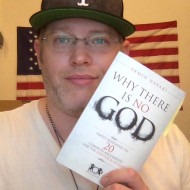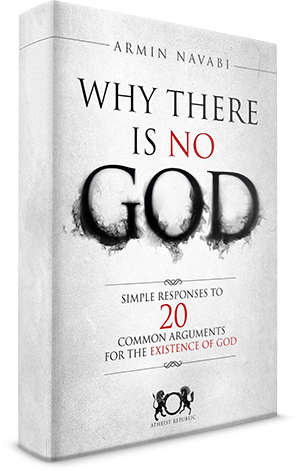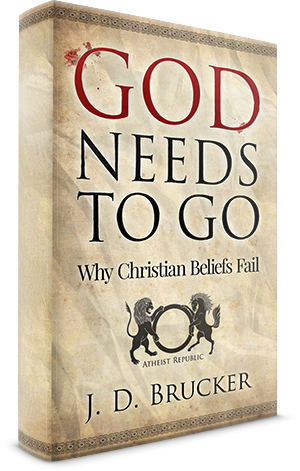
Parents need to feel comfortable explaining atheism and theism to children. Education should outweigh the fear of labeling a child early in life.
Teaching kids about religion and atheism is a topic of much heated debate. Some parents feel teaching them about theism or atheism is the same as indoctrinating them with a religious belief. Other parents feel that they do not want their child to be labeled so early in life as either a believer or nonbeliever. As a mom, I struggled with this myself. I did not want my son to be an atheist because I told him to or because I pushed it on him nor did I want him to believe in a religion because someone told him that was the only way to be. If I did not teach him about religion, someone else would and he would only have their opinions on it, not the facts. I thought, a truly educated mind, even a young mind, needs to have knowledge. If we keep definitions or ideas from children out of fear of them leaning one way or another, we are doing them an injustice.
The biggest hurdle parents need to get past is that explaining atheism to a child is not indoctrinating them; it is giving that child knowledge about it. As adults and parents, we need to start separating our own fears from our desire to educate our children. Introducing religion to kids can be a tough subject because as parents, we certainly do not want them to think that a belief is a fact or the right thing to do. We need to find a common ground between indoctrinating a belief and educating them about all the religions of the world; or at least the most common religions of the world.
Introducing theism
How do you start a conversation about religion with a young child? This is something most parents probably struggle with. Religion is complicated for adults, let alone talking about it with a child who cannot understand right from wrong yet. Science and history are equally complicated for young minds. The best thing we, as parents, can do is make it simple for kids. Even the most complicated issue can be put into easy terms for a child as young as 3 to understand. Simplicity is certainly the key in making sure children can grasp the concept, but also be prepared when around others who talk about subjects, like a religious belief, around them.
There are so many ways to introduce children to religion and non-belief, but the best way is to do it in a cultural way. However, in order to discuss people who do not believe, you must first discuss the people who do believe in religion, why they believe, and what they believe in. When teaching children about the basic geography of the world, which most parents do anyway; introduce them to the names of religious beliefs held by the people of those countries. For example, show them Iraq on a map and state that the most popular religion there is Islam. Then, let your child ask questions or you can even ask them, “Do you know what religion is?” or “Do you know what Islam is?” Even if you know the answer already, asking questions like this opens a dialogue to begin the discussion.
Talking about atheism
Basic questions are usually the easiest to answer. Introductions to religious beliefs may not field a lot of questions or dialogue with kids, depending on their age. It is when the conversation gets detailed that it can get complicated and even awkward; especially when bringing up atheism to kids. Everyone who is atheist has either come to the decision later in life or at least on their own, but there are some that were raised in a non-religious household. For this reason, it is hard to pinpoint a universal conversation to have with children about atheism versus religious beliefs. Even though it is hard, there is one way to discuss atheism, even your own atheism, with kids that will not push your ideals on them.
The conversation around atheism and why someone chooses not to believe is detailed and can be long depending on the amount of questions or curiosity the child has surrounding the subject. I have found that being honest with a child is the best policy. The way I explained atheism to my child is simply someone who does not believe in any god or gods that others do. I explained, very simply, that I looked at their religious beliefs and they did not make sense according to science and that is why I do not believe. Try to avoid saying, “That is the right reason” or “That makes the most sense.” Using verbiage like that can sway your child’s own opinion. As parents, we need to makes sure not to cross the line of education and indoctrination. Inserting your own opinion on the matter is fine, as long as you make it clear that it is your opinion.
Let your child explore
The hardest part about parenting, in my opinion, is to know the boundary between guiding your child down their own path and leading them down a path you think they should be on. As parents, we often forget that even though these tiny humans are young and ours, they are also their own person. Let them explore different religious beliefs and answer their questions as objectively as possible. Parents need to also make sure they give their child the tools to find some answers on their own as well. Teach them the basics, but leave it to where your child wants to know more. Doing that makes them ask questions and that is the best for a child to do. Introducing religious beliefs and atheism to a child does not have to be complicated or an awkward subject. It can actually be one of the best conversations you can have with your children. Just remember that education is the most important thing for your child. If you can do that, your child will choose their own path and be happier and more productive as adults.





























